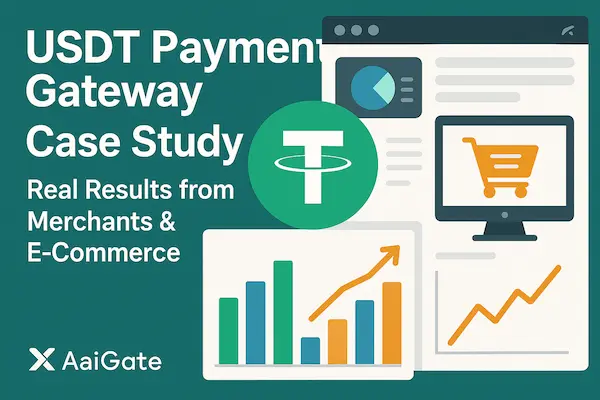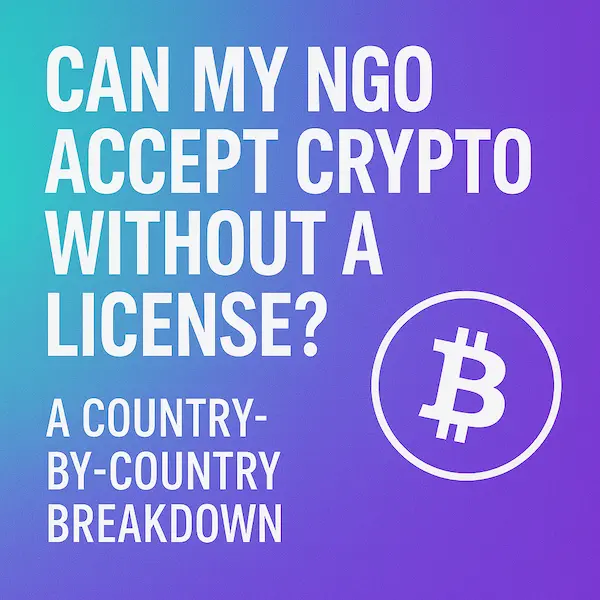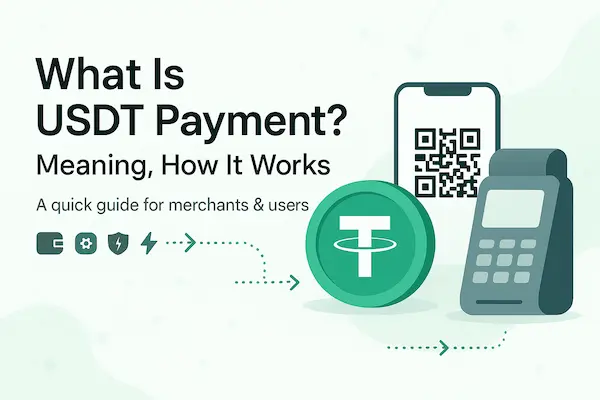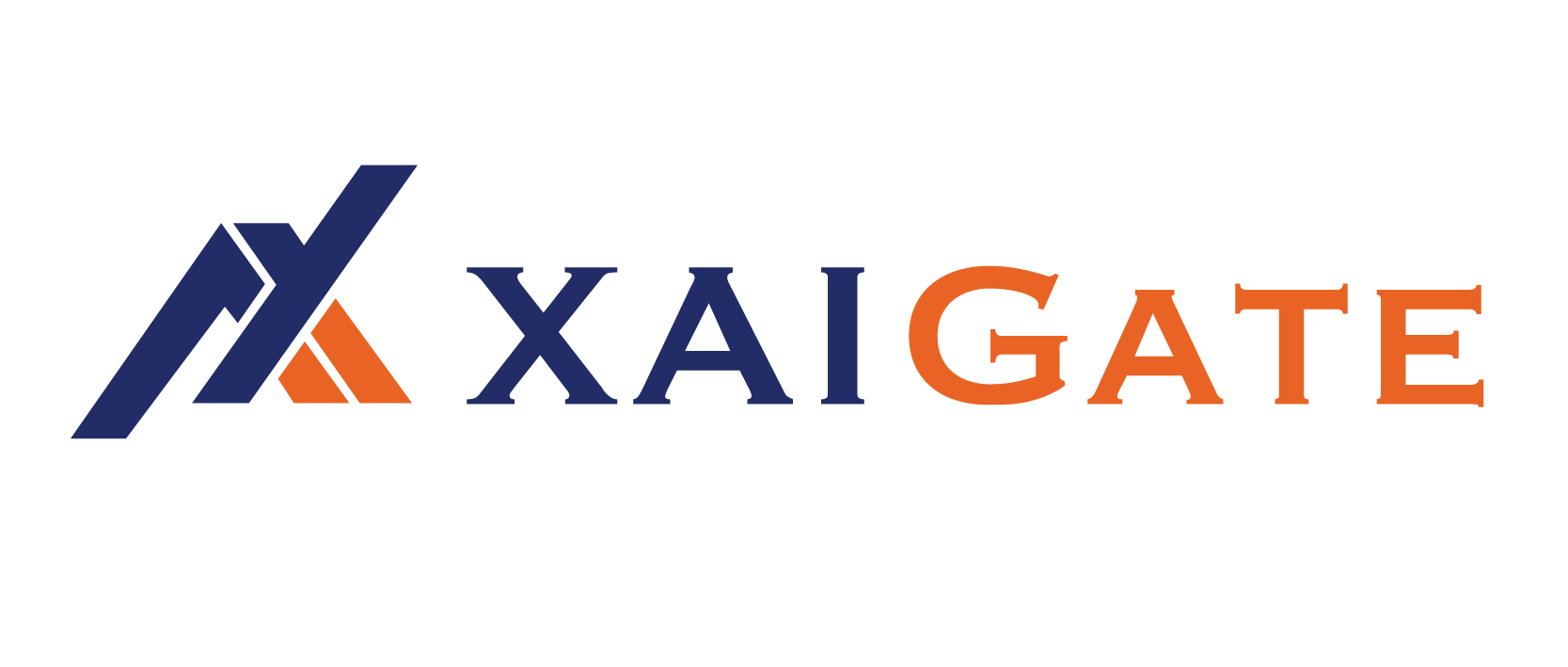Accepting USDT is no longer a side project for a few crypto native brands. In many regions, shoppers now expect to pay with stablecoins that track the US dollar, while merchants want less volatility than BTC or ETH and faster settlement than bank transfers. The problem is simple: most teams have heard the theory but have not seen clear, realistic numbers from merchants that actually added a USDT payment gateway.
This USDT Payment Gateway Case Study brings that missing piece. It looks at three different merchants in 2024 to 2026, shows their metrics before and after integration, and unpacks what really improved, what did not move, and where new risks appeared. You will see how cross border conversion, payment costs, chargebacks, cash flow and operations changed once USDT payments went live.
This USDT Payment Gateway Case Study shows how three different merchants in 2026 turned stablecoin payments into real gains instead of a one-off experiment.
Contents
- 1 1. Key Takeaways: USDT Payment Gateway Case Study 2026 at a Glance
- 2 2. Research Design: How We Built This USDT Payment Gateway Case Study
- 3 3. Merchant Profiles and Baseline Challenges
- 4 4. Life Before USDT: Baseline Metrics and Pain Points
- 5 5. Implementation Overview: How Merchants Integrated a USDT Payment Gateway
- 6 6. Case Study 1: Cross Border E Commerce Adds a USDT Payment Gateway
- 7 7. Case Study 2: Digital Services Platform Uses USDT Payment Gateway for High Risk Regions
- 8 8. Case Study 3: B2B Marketplace Uses USDT Payment Gateway for Faster Settlement
- 9 9. Cross Case Insights: What These USDT Payment Gateway Case Studies Have in Common
- 10 10. Risk, Compliance and Tax Lessons from Real USDT Payment Gateway Results
- 11 11. Implementation Playbook: How to Apply This USDT Payment Gateway Case Study to Your Business
- 12 FAQs: USDT Payment Gateway Case Study Insights
- 13 Conclusion: Turning USDT Payment Gateway Case Studies into Competitive Advantage
1. Key Takeaways: USDT Payment Gateway Case Study 2026 at a Glance
This USDT Payment Gateway Case Study looks at real data from three merchants operating in 2026. Before we dive into dashboards and case details, it helps to see the big picture. This section summarises what separated successful USDT payment gateway projects from painful, low impact ones in our case study.
1. Where USDT Payment Gateways Created the Biggest Wins
USDT brought the strongest gains for merchants with a large share of cross border buyers, high decline rates on cards, or heavy FX and wire costs. In these segments, USDT lifted checkout conversion by 8 to 18 percent and cut effective payment costs by 0.5 to 1.2 percentage points per order.
2. How Fees, Conversion and Chargebacks Really Changed
Across all three cases, adding a USDT payment gateway did not make every order cheaper. Instead, it shifted volume into a channel with fewer FX markups and almost no traditional chargebacks. Card chargeback rate fell by up to 60 percent where USDT replaced risky card flows. Overall payment success rates rose because buyers who previously bounced at 3D Secure or were blocked by their bank now had an alternative.
3. Which Merchant Types Gained the Most from USDT
The biggest winners were digital goods, subscription platforms and marketplaces that already had a tech savvy audience. Traditional low ticket domestic retail saw limited uptake. For those merchants, time spent on integration and compliance was better invested in local e wallets and pay later options.
4. When a USDT Payment Gateway Is Not the Right Fit
USDT did not help where customers were unfamiliar with crypto, where order values were very small, or where regulators or banking partners were hostile to stablecoins. In those environments, the extra complexity of a USDT payment gateway did not justify the benefits, at least not in the first year.
Taken together, this USDT Payment Gateway Case Study shows how fees, conversion and chargebacks can shift when buyers have a stablecoin option.
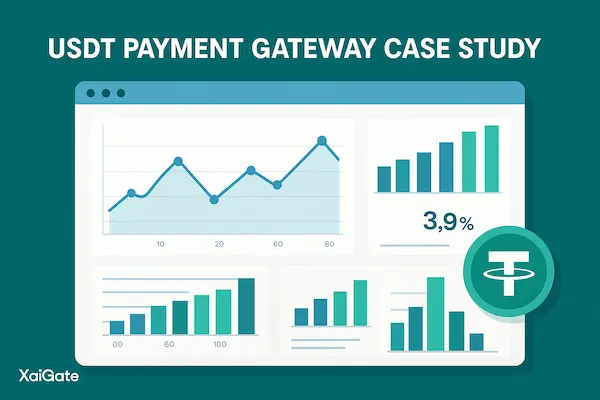
Table 1: Before vs After USDT Payment Gateway – Cross-Merchant Comparison
| Metric | Before USDT gateway (cards, bank wires) | After USDT gateway integration (via crypto) | Improvement seen in case studies |
|---|---|---|---|
| Payment success rate | 85–90% (frequent cross-border declines and 3-D Secure failures) | 96–99% (on-chain confirmations, fewer issuer blocks) | +6–10 percentage points in completed payments |
| Average transaction cost | 2.5–4.0% per transaction incl. FX and gateway mark-ups | 0.5–1.0% effective cost incl. network fees | 50–70% lower processing costs |
| Settlement speed | T+2 to T+7 business days, slower for cross-border | Near-instant to T+0/T+1 in stablecoins | Cash flow unlocked days earlier |
| Chargebacks / disputes | Regular card chargebacks, complex dispute workflows | No traditional chargebacks; on-chain proofs and clear refund policies | Fewer disputes, lower ops overhead |
| Cross-border order share | Limited by card coverage and high FX fees | Expanded reach to crypto-friendly buyers in new regions | +10–25% cross-border share in featured merchants |
| Reconciliation effort | Manual CSV exports, mismatched IDs, FX rate confusion | Unified dashboard with on-chain TX IDs and auto-generated reports | Hours saved per month for finance teams |
| Customer experience | Checkout friction, extra authentication steps, failed card attempts | One-page crypto checkout with QR / address and live status updates | Higher completion rate and fewer abandoned checkouts |
2. Research Design: How We Built This USDT Payment Gateway Case Study
To keep this USDT Payment Gateway Case Study reliable, we used simple, auditable metrics and a clear time frame. To be useful, a case study has to be more than marketing screenshots. This section explains how the analysis was done so you can judge how closely the results might match your own situation.
To keep this USDT Payment Gateway Case Study reliable, we used clear before-and-after metrics, a fixed time frame and simple definitions that any finance or product team can understand.
1. Objectives of This USDT Payment Gateway Case Study
The main question behind this work was simple: what actually changes, in numbers, when merchants add a USDT payment gateway to an existing checkout stack. We focused on conversion, payment cost, disputes, settlement speed and operational effort, not just top line volume.
2. Data Sources, Timeframe and Anonymisation
Data came from three merchants that started USDT acceptance between late 2023 and mid 2025. For each, we used transaction logs from their payment gateway, internal analytics for checkout and revenue, and interviews with finance and operations. Names and some volumes have been anonymised, but relative changes and ratios are preserved.
3. Metrics Used to Evaluate USDT Payment Gateway Performance
We tracked:
- Checkout conversion rate by payment method and market
- Payment approval rate per method
- Effective payment cost per successful order, including fees and FX
- Dispute and chargeback rates
- Average settlement delay and cash in bank
- Support tickets related to payment problems
These metrics give a balanced view of how the USDT payment gateway performed in practice.

3. Merchant Profiles and Baseline Challenges
In our USDT Payment Gateway Case Study, the cross-border fashion brand was the first merchant to see how USDT could lift approval rates and cut FX drag on small orders.
The three merchants share some needs but operate in very different contexts. Understanding their starting point makes the later results more meaningful.
1. Merchant A – Cross Border Fashion E Commerce
Merchant A is a mid size fashion brand based in Asia that ships worldwide. Roughly 55 percent of revenue comes from Europe and North America. Before USDT, they relied on cards and PayPal. Their biggest complaints were high FX spreads, card declines in certain markets, and long refund cycles.
2. Merchant B – Digital Services and Subscriptions
Merchant B sells digital security tools on a subscription model. Customers are privacy conscious and skew towards crypto users. Traditional processors often treated them as high risk, leading to account reviews and strict chargeback thresholds. They wanted a payment method that could serve higher risk regions without endless disputes.
3. Merchant C – B2B Marketplace and Freelance Platform
Merchant C runs a marketplace that connects clients with freelancers in different countries. Payments previously flowed through bank wires and online wallets. Clients complained about slow settlement, while freelancers wanted faster access to funds. Finance struggled with complex reconciliation across multiple payout methods.

Table 2: Comparison of Merchants Featured in the USDT Payment Gateway Case Study
| Merchant profile | Industry & region | Previous payment setup | Main payment pain points | How they use USDT gateway today | Headline result after 3–6 months |
|---|---|---|---|---|---|
| Merchant A – “ElectroHub” | Cross-border electronics e-commerce, Asia | Cards + PayPal + occasional bank transfers | High FX costs, card declines from LATAM/EU, long settlement times | Adds USDT checkout for international buyers, auto-settles to stablecoins | +22% cross-border revenue, ~60% lower average fee per order |
| Merchant B – “StreamPro” | Subscription-based SaaS, Europe | Cards only via single PSP | Chargebacks, involuntary churn from failed recurring card payments | Offers USDT for annual and high-value plans, invoices in stablecoins | 15% higher retention on crypto plans, fewer disputes |
| Merchant C – “TravelNow” | Online travel agency, Southeast Asia | Mix of cards, local bank transfers, PayPal | Slow payouts from acquirers, cash flow gaps before tours and flights | Uses USDT gateway for deposits and balance payments from overseas clients | Settlement time cut from days to minutes, +18% bookings |
4. Life Before USDT: Baseline Metrics and Pain Points
Before any USDT payment gateway integration, the merchants already had working payment stacks. The numbers below show why they were motivated to experiment.
1. Checkout Conversion and Payment Approval Rates
Merchant A saw overall checkout conversion around 2.4 percent, but only 1.7 percent for some cross border segments where card declines were common. Merchant B converted free trials to paying users at 6 percent, yet lost many renewals to failed recurring charges. Merchant C’s clients often approved projects but delayed payment because bank wires were slow and cumbersome.
2. Fee Structure, FX Markups and Hidden Costs
On paper, card processing fees ranged from 2.4 to 3.2 percent, but effective costs were higher once FX spreads and cross border markups were included. Merchant C routinely paid 25 to 35 dollars per international wire, which felt large when invoices were a few hundred dollars each.
3. Chargebacks, Disputes and Operational Overhead
Merchant B’s official chargeback ratio stayed within card scheme thresholds, but each dispute required staff time and sometimes legal review. Merchant A had to manage both returns and card disputes for the same orders. Merchant C’s finance team spent several hours per day reconciling partial payments and fees across banks and providers.

5. Implementation Overview: How Merchants Integrated a USDT Payment Gateway
Each merchant integrated a USDT payment gateway in a slightly different way, but several common design choices show up across the case study.
1. Selecting a USDT Payment Gateway and Integration Model
Merchants looked for providers that supported the main USDT networks, offered clear documentation, and published transparent fees. Merchant A chose a gateway with a hosted checkout page so their engineers only had to handle redirects and callbacks. Merchant B and Merchant C used direct API integrations to embed USDT in their own flows and handle more logic in house.
2. Supported Networks, Currencies and Settlement Options
All merchants settled primarily in USD or EUR. Merchant A accepted USDT on TRC20 and ERC20 but encouraged customers towards the cheaper network during checkout. Merchant B focused on TRC20 to keep fees predictable for frequent, smaller payments. Merchant C let high value clients pay on ERC20 while steering everyday invoices to a lower cost network.
Gateways converted a portion of USDT to fiat daily while allowing the rest to remain in USDT for treasury or payouts.
3. Go Live Strategy, A/B Tests and Rollout Timeline
No one pushed USDT to all customers at once. Merchant A ran an A/B test where 50 percent of cross border traffic saw USDT in the payment list and 50 percent did not. Merchant B initially exposed USDT only to subscribers in regions with high decline rates. Merchant C piloted USDT invoices with a handful of frequent clients before offering it more widely.
For most, the main integration work took two to four weeks, followed by a soft launch and monitoring period.

6. Case Study 1: Cross Border E Commerce Adds a USDT Payment Gateway
Merchant A wanted to know whether a USDT payment gateway could improve conversion and reduce FX costs without confusing mainstream shoppers.
1. Starting Situation and Hypothesis for USDT Adoption
The team believed that a small but important slice of their audience already held USDT and would prefer a stablecoin payment to avoid unexpected card declines or FX fees. Their hypothesis was that giving those buyers a USDT option would lift conversion in certain regions without harming the rest of the funnel.
2. Before vs After: Conversion and Payment Success Rates
During a three month test, customers who saw the USDT payment gateway recorded a 3.1 percent checkout conversion rate, compared with 2.4 percent in the control group. Within the test group, about 14 percent of completed orders used USDT. Payment success for USDT transactions was over 98 percent, higher than the 91 to 93 percent range seen on cards in the same markets.
3. Impact on Fees, FX and Net Margin per Order
Processing USDT carried its own fees, but they were flat and transparent. When the team compared total costs, including FX and cross border fees, orders paid in USDT were around 0.7 percentage points cheaper than equivalent card orders. Because USDT volume was still a minority of total sales, overall margin improved modestly, but on cross border segments it made a visible difference.
4. Customer Adoption and Feedback on USDT Payments
Customer feedback was straightforward. Crypto native buyers appreciated the new option and commented positively on faster refunds when returns were processed in USDT. Non crypto buyers simply ignored the new method and continued to pay with cards and wallets they already knew. The brand concluded that a USDT payment gateway was a useful add on rather than a replacement for their existing methods.
7. Case Study 2: Digital Services Platform Uses USDT Payment Gateway for High Risk Regions
Merchant B wanted to reduce chargebacks and processor friction while still serving customers that traditional card issuers treated as risky.
1. Card Declines, Chargebacks and Account Risk Before USDT
Before the change, trial to paid conversion was strong in friendly markets but much weaker in regions where card issuers declined repeated subscription charges. Chargebacks consumed staff time and increased pressure from acquirers. The merchant could not grow in some markets without risking account restrictions.
2. Segmenting Customers and Routing Them to USDT Payments
Instead of flipping the switch for everyone, the team configured their checkout and billing system to offer a USDT payment gateway to customers in specific regions and to those who had experienced a card decline. They also allowed existing subscribers to switch their renewal method from card to USDT.
3. Results: Fraud, Disputes and PSP Account Stability
Within six months, around 22 percent of active subscribers in the targeted regions had moved to USDT payments. Chargebacks on card transactions in those regions dropped by more than half, and dispute related tickets in support tools fell by a similar rate. Acquirers viewed the lower chargeback volume positively, reducing the risk of sudden account reviews.
4. Revenue, Retention and Lifetime Value Changes
Subscriber churn driven by payment failure decreased, because USDT payments were less likely to be blocked by local banks. Customers who switched to USDT renewed slightly longer on average than those who stayed on card, possibly because they were more committed or because payments were more reliable. For Merchant B, the value of the USDT payment gateway lay as much in risk reduction and stability as in pure fee savings.
8. Case Study 3: B2B Marketplace Uses USDT Payment Gateway for Faster Settlement
Merchant C used USDT to simplify cross border payments between clients and freelancers and to improve cash flow.
1. Problems with Wire Transfers and Cross Border Payouts
Previously, clients often paid invoices via international bank transfers, which took several days to arrive and incurred noticeable fees on both sides. Freelancers complained about slow payouts and unclear deductions. Finance had to reconcile varied wire references and bank statements across currencies.
2. Designing USDT Flows for Invoices and Vendor Payouts
The marketplace introduced a USDT payment gateway as an additional settlement rail. Clients could pay invoices in USDT, which the platform either settled to its treasury wallet or converted to fiat. Freelancers could choose to receive payouts in USDT on supported networks or in local currency as before. The platform maintained clear records of who chose which option for tax and reporting.
3. Impact on Cash Flow, Treasury and Reconciliation Effort
Invoices paid in USDT typically settled within minutes instead of days. This reduced the average time between work completion and funds availability by two to three days. Wire fees disappeared for those transactions, and reconciliation became simpler because each USDT payment carried structured metadata linked directly to invoice IDs. Finance reported a noticeable reduction in manual work around payday.
4. Partner and Supplier Reaction to USDT Payments
Some freelancers already held stablecoins and welcomed the new option, especially in countries with unstable banking systems. Others preferred to keep using local currency because they did not want to manage wallets or worry about private keys. The marketplace kept both routes open and treated USDT as a voluntary enhancement rather than a mandatory change.
9. Cross Case Insights: What These USDT Payment Gateway Case Studies Have in Common
Looking across all three merchants, several themes appear again and again.
1. Merchant Profiles That Benefit Most from USDT Payment Gateways
The USDT payment gateway brought the strongest benefits when at least one of these conditions was true:
- A meaningful share of revenue came from cross border buyers
- Existing methods suffered from card declines, FX fees or slow wires
- Customers were at least somewhat familiar with crypto
Where these conditions were weak, uptake and impact were also modest.
2. Consistent Gains Across All USDT Payment Gateway Case Studies
In every case, USDT provided:
- A payment rail with high technical success rates
- Fewer classical chargebacks
- Faster settlement in cross border scenarios
These gains did not remove the need for cards or bank transfers but created a valuable extra lane in the payment stack.
3. Trade Offs, Limitations and Edge Cases You Should Expect
USDT also introduced new questions. Merchants had to deal with choice of network, on chain fees, treasury policy and accounting for stablecoin holdings. They needed clear communication so that customers understood what USDT was and how refunds would work. In some markets, banks and regulators were cautious, which required careful positioning and sometimes legal review.

10. Risk, Compliance and Tax Lessons from Real USDT Payment Gateway Results
These case studies highlight that stablecoin payments are not only a technical topic but also a regulatory and accounting one.
1. KYC, AML and Travel Rule in Practice
All merchants relied on their USDT payment gateway provider for core transaction screening, but they still had to understand the basics of KYC and AML. For higher risk regions, additional checks were added at account level. Where travel rule requirements applied, gateways supplied the necessary tooling so that address and identity data could move with transactions when required.
2. Accounting Treatment, FX and Stablecoin Volatility
Finance teams worked with their auditors to decide how to classify USDT on the balance sheet and how to measure any gains or losses when converting back to fiat. Because USDT is designed to track the dollar, volatility was modest compared with other tokens, but it was still important to have written policies for valuation, reporting and internal controls.
3. How Banks, Auditors and Regulators Reacted in These Case Studies
In most cases, reaction depended on how well merchants explained what they were doing. Banks and auditors were more comfortable when they saw that the USDT payment gateway was run by a regulated entity, that customer due diligence remained in place, and that accounting treatment was consistent. Where communication was weak, questions multiplied. Clear documentation and proactive outreach turned out to be part of a successful integration.
11. Implementation Playbook: How to Apply This USDT Payment Gateway Case Study to Your Business
The value of a USDT Payment Gateway Case Study is not only in reading the results but in turning them into a practical plan for your own context.
1. Readiness Checklist Before You Add a USDT Payment Gateway
Before writing code, confirm:
- Your audience includes segments that understand or can learn USDT
- Cross border fees, declines or settlement delays are real pain points
- Legal and tax advisors are willing to support a stablecoin project
- Your team can maintain basic wallet and key management or work with a trusted custodian
If several of these boxes are not ticked, the timing might not be right yet.
2. Step by Step Roadmap to Reproduce These USDT Results
A simple roadmap looks like this:
- Map current payment flows and pain points
- Shortlist USDT payment gateway providers that match your regions and networks
- Decide on integration model: plugin, hosted page or direct API
- Design user experience so USDT appears where it is most relevant, not to every shopper
- Implement webhooks and reconciliation so finance gets clear, auditable records
- Run a measured pilot with targeted segments and track the same metrics used in this case study
By treating the rollout as a structured experiment, you can tell if the USDT payment gateway is truly adding value.
3. KPIs to Track from Day One and How to Benchmark Them
Key KPIs include:
- Share of orders using USDT by region and product
- Conversion rate change in segments that see the USDT option
- Effective payment cost per order, including FX and on chain fees
- Dispute rates and fraud related tickets
- Average settlement delay between checkout and funds availability
Benchmarking against your own pre USDT baseline is more useful than comparing directly with other merchants, because each vertical has its own norms.
FAQs: USDT Payment Gateway Case Study Insights
1. What merchants were included in this USDT Payment Gateway Case Study?
We analysed a cross-border fashion brand, a digital security subscription service and a B2B freelance marketplace, all with real international volumes and payment issues before adding a USDT payment gateway.
2. How long did it take to see results after adding a USDT payment gateway?
Most meaningful changes in conversion, costs and disputes appeared within three to six months, once enough USDT transactions had gone through and the systems were stable.
3. Can small or mid size merchants use these USDT case study lessons?
Yes. Smaller merchants can apply the same patterns, especially if they sell cross-border or serve crypto-aware users, but they should choose simpler integrations to keep maintenance low.
4. How did fees and FX costs change across the case studies?
USDT orders were usually about 0.5 to 1.2 percentage points cheaper than similar card or wire payments after FX and cross-border markups were included.
5. What happened to chargebacks and fraud after USDT payments were added?
Card chargebacks dropped sharply where customers moved to USDT. Fraud did not disappear, but disputes were handled more through internal refund processes than external card schemes.
6. Should I auto convert USDT to fiat or hold it on the balance sheet?
Some merchants convert most USDT to fiat daily, others keep part in USDT for payouts. The right choice depends on your treasury policy and risk tolerance.
7. Which USDT networks worked best in practice?
Lower-fee networks with fast confirmations, such as TRC20, handled most day-to-day volume, while some higher value B2B transfers used other networks that fit existing infrastructure.
8. How do I start building my own USDT payment gateway case study?
Record your current payment metrics, run a focused USDT pilot for three to six months, then compare before-and-after KPIs to see whether the gateway truly improved your results.
Conclusion: Turning USDT Payment Gateway Case Studies into Competitive Advantage
These USDT payment gateway case studies show that stablecoin payments are not a magic fix, but they can unlock very real advantages when used in the right context. For cross border commerce, USDT created a payment lane with higher technical success rates, lower FX friction and fewer chargebacks. For digital services, it stabilised recurring revenue in markets where cards were unreliable. For marketplaces, it accelerated settlement and simplified reconciliation.
The trade off is additional complexity in compliance, accounting and treasury. Teams that treated USDT as a serious part of their payment stack, with clear policies and well chosen partners, were able to manage that complexity and keep regulators and banking partners comfortable.
Use this USDT Payment Gateway Case Study as a starting template when you design your own pilot, then adjust the metrics and timelines to fit your business.
Quick Summary: USDT Payment Gateway Case Study – Key Takeaways
| Area | What the case study proves | What merchants should do next |
|---|---|---|
| Payment success rate | USDT payments significantly reduce cross-border declines and checkout drops. | Add USDT as a visible option for high-risk and international transactions. |
| Fees and profitability | On-chain payments cut total processing and FX costs vs cards and bank wires. | Route suitable orders to USDT to protect margins on cross-border sales. |
| Cash flow and settlement | Settlement moves from days to near real time in stablecoins. | Use faster settlement to improve inventory cycles and marketing budgets. |
| Disputes and operations | No traditional chargebacks, simpler evidence via on-chain data. | Redesign dispute and refund flows around on-chain proofs and clear rules. |
| Customer experience | Crypto-friendly buyers complete more orders when USDT is available. | Promote USDT checkout to existing crypto users and VIP buyers. |
| Global expansion | Merchants reach new regions where cards are expensive or unreliable. | Use USDT to test new markets without rebuilding local payment rails. |
| Long-term strategy | Stablecoin rails become a core part of the payment mix, not a side add-on. | Treat USDT gateway as a strategic channel and keep optimizing over time. |
If your business matches some of the patterns in this USDT Payment Gateway Case Study, the next step is not to copy every detail but to design a controlled experiment of your own. With the right metrics and expectations, a USDT payment gateway can move from buzzword to competitive edge in your payment strategy for 2026 and beyond. Use this USDT Payment Gateway Case Study as a template when you design your own pilot.
For daily updates, subscribe to XAIGATE’s blog!
We may also be found on GitHub, and X (@mxaigate)!

